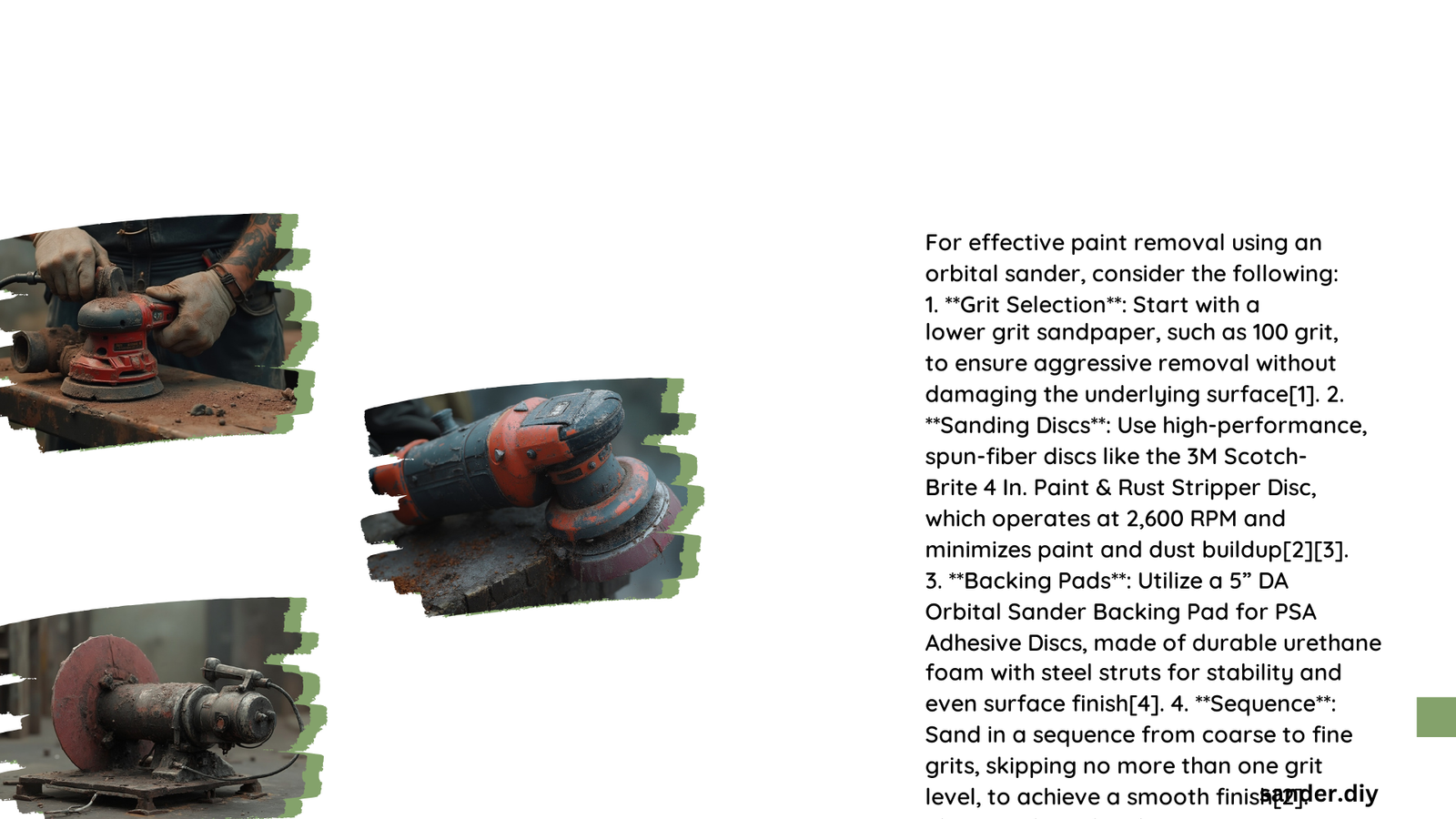Orbital sander pads are precision tools designed to efficiently strip paint from various surfaces, offering professionals and DIY enthusiasts a powerful method for surface restoration. By understanding the nuanced selection of grit levels, adhesive technologies, and application techniques, users can transform worn, painted surfaces into pristine canvases ready for refinishing or new coatings.
What Are the Best Grit Levels for Paint Removal?
Paint removal requires a strategic approach to grit progression. Here’s a comprehensive breakdown:
Coarse Grit Strategy
- 40-60 Grit: Ideal for initial paint stripping
- Removes multiple paint layers quickly
- Aggressive material removal
- Best for thick, stubborn paint coatings
Progressive Grit Approach
| Grit Range | Purpose | Recommended Technique |
|---|---|---|
| 40-60 | Initial Stripping | Heavy pressure, rapid movement |
| 80-120 | Surface Smoothing | Moderate pressure, systematic passes |
| 150-180 | Fine Preparation | Light pressure, careful coverage |
| 240+ | Final Refinement | Minimal pressure, precision work |
How Do Professional Orbital Sander Pads Differ?

Professional-grade orbital sander pads distinguish themselves through:
- Material Composition
- Aluminum oxide for durability
- Silicon carbide for aggressive paint removal
-
Ceramic abrasives for extended pad life
-
Adhesive Technologies
- Hook-and-loop systems for quick pad changes
- High-temperature resistant adhesives
- Even weight distribution mechanisms
What Factors Influence Pad Selection?
Critical considerations include:
- Surface material (wood, metal, composite)
- Paint type (latex, oil-based, epoxy)
- Project complexity
- Required finish quality
Pro Tips for Optimal Paint Removal
🔧 Expert Recommendations:
– Always wear protective equipment
– Maintain consistent sander movement
– Use dust extraction systems
– Replace pads when abrasiveness diminishes
– Clean surface between grit progressions
Common Mistakes to Avoid
- Applying excessive pressure
- Using incorrect grit sequence
- Neglecting dust management
- Using worn-out sanding pads
- Ignoring surface preparation
Maintenance and Care
Pad Longevity Strategies
- Store in cool, dry environments
- Clean after each use
- Rotate pads to ensure even wear
- Invest in high-quality replacement pads
Recommended Brands and Products
- Festool Granat Sanding Discs
- 3M Hookit Precision Pads
- Norton Blaze Ceramic Sanding Discs
- Mirka Abranet Mesh Sanding Sheets
Final Surface Preparation Checklist
- ✅ Complete paint removal
- ✅ Smooth surface texture
- ✅ No remaining paint residue
- ✅ Ready for primer or new coating
Pro Insight: Successful paint removal is 70% technique, 30% equipment quality.
Technical Specifications to Consider
- Pad Diameter: 5-6 inches recommended
- Hole Configuration: Multi-hole dust extraction
- Backing Material: Flexible, reinforced substrate
- Abrasive Density: High-density particle distribution
Cost vs. Performance Analysis
While professional-grade pads might seem expensive, they offer:
– Faster paint removal
– Better surface finish
– Longer operational life
– Reduced material consumption
Safety and Environmental Considerations
- Use NIOSH-approved respirators
- Work in well-ventilated areas
- Properly dispose of paint debris
- Consider lead paint testing for older surfaces
Conclusion
Mastering orbital sander pads for paint removal requires understanding nuanced techniques, selecting appropriate tools, and maintaining precise execution. Continuous learning and practice will elevate your surface preparation skills.
